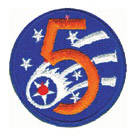JeffroK
Posts: 6391
Joined: 1/26/2005
Status: offline

|
From Joe Baughers excellent website:
The first A-36A flew on September 21, 1942. Deliveries of the A-36A were completed by the following March. The A-36A equipped the 27th and 86th Fighter Bomber Groups based in Sicily and in Italy. They initially were painted in olive-drab and light-gray finish and were painted with yellow wing bands and yellow circles around the national insignia. Both of these Groups arrived in North Africa in April of 1943 just after the end of the Tunisian campaign. They saw their first action during aerial attacks on the island of Pantelleria, with the first sortie being flown on June 6, 1943. The A-36A was involved in the taking of Monte Cassino, and participated in the sinking of the Italian liner Conte di Savoia.
The only other A-36 user was the 311th Fighter Bomber Group, based in India. It saw extensive use in the China-Burma-India theatre.
Several sources list the Invader as not being particularly effective during combat. It seems that this is not strictly correct. Although losses during low-level attacks were rather high, the A-36 was actually a good dive bomber and it was a stable and effective ground strafer. The engine was very quiet, and it was often possible for an A-36 to get nearly on top of an enemy before he realized that an attack was imminent. Dive bombing was usually initiated from an altitude of 10,000 feet to 12,000 feet, with bombing speed held to around 300 mph by the dive brakes. The bombs were dropped at an altitude of 3000 feet, and pullout was at approximately 1500 feet. The Invader was fairly rugged and easy to maintain in the field. The A-36 could consistently stay within 20 feet of the deck and could easily maneuver around trees, buildings, and other obstacles while strafing. The A-36A was able to take a considerable amount of battle damage and still return to base. Nevertheless, a total of 177 A-36As were lost in action.
The A-36s did not see very much air-to-air combat, since it was optimized for low-altitude operations and lost its effectiveness above 10,000 feet altitude. It was generally believed that the A-36 Invader was no match for the Messerschmitt Bf 109 at high altitudes, and that it was therefore best for A-36 pilots to avoid such encounters if at all possible. If air-to-air combat was unavoidable, it was thought best to force the battle down to altitudes below 8000 feet, where maximum advantage could be taken of the A-36A's excellent low-altitude performance. Although it was not a fighter, the Invader claimed 101 enemy aircraft destroyed in air-to-air combat. One of the pilots of the 27th Fighter Bomber Group, Lt Michael T. Russo, became the only ace in the Allison-engined Mustang, although several other of his colleagues did score victories as well
_____________________________
Interdum feror cupidine partium magnarum Europae vincendarum
|
 Printable Version
Printable Version











 Dutch
Dutch
 New Messages
New Messages No New Messages
No New Messages Hot Topic w/ New Messages
Hot Topic w/ New Messages Hot Topic w/o New Messages
Hot Topic w/o New Messages Locked w/ New Messages
Locked w/ New Messages Locked w/o New Messages
Locked w/o New Messages Post New Thread
Post New Thread